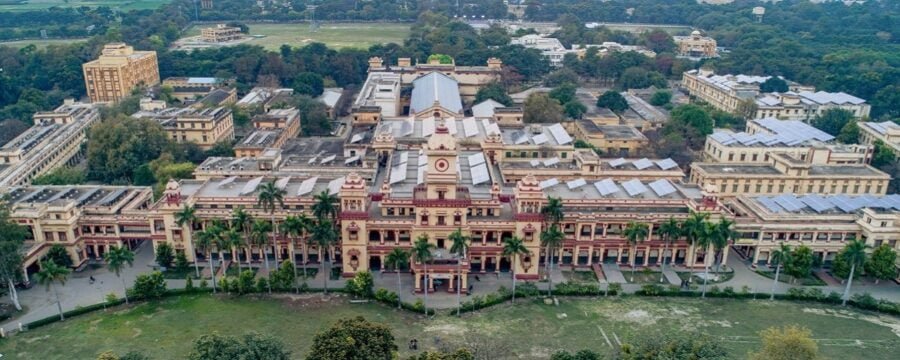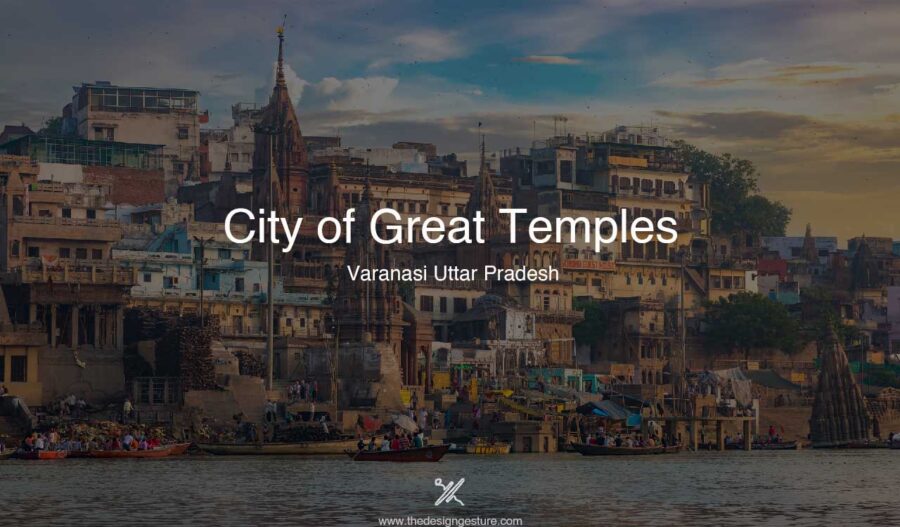Varanasi is also well known as Kashi. The name, Kashi comes from the Sanskrit word काशि, which means ‘where the cosmic light collects in a circle’ or ‘illumination’. Varanasi Uttar Pradesh, it is regarded as the holiest of the Sapta Puris. Kashi has long been associated with Jainism, Hinduism, and Buddhism, and was also invaded by the Mughals, bringing Islam to the region.
The Ganga River’s religious significance and Varanasi culture are closely intertwined. According to certain beliefs, humans come here to pass away and reach nirvana by ending the cycle of life and death. The whole creation of the city has evolved from this one assumption that the Ganga ghats contain some kind of cosmic loop. Varanasi’s diverse cultural landscape, which embodies both its concrete and intangible heritages, is a testament to this. The city is home to more than 300 significant monuments. Varanasi’s physical legacy consists of ghats, museums, mosques, and temples. On the other hand, cultural legacy includes things like music, art, crafts, dance, and literature, as well as natural landscapes.’
Table of Contents
Varanasi Uttar Pradesh: History in its People and Tales
One of the world’s oldest cities still under continuous occupation is Varanasi. It was among the middle Ganges Valley’s first significant urban communities. In addition to being a center of commerce and industry by the second millennium BCE, Varanasi was home to the Vedic religion and philosophy. It was also well-known for its sculpture, muslin and silk fabrics, perfumes, and ivory products. During the Buddha’s lifetime, it served as the capital of the kingdom of Kashi. The well-known Chinese Buddhist traveler also attested to Varanasi’s continued status as a hub for artistic, academic, and religious endeavors.
Later, the Britishers made Varanasi a new state and then it became a part of Uttar Pradesh. The contemporary city that is today is an addition to the idea of present to the past which can be seen in its development and accessibility.
Ghats: Heart of Varanasi
The river Ganga, on which the ghats of Varanasi Uttar Pradesh mark its richness, has a significant meaning in Indian Culture. The river is considered to be the mother of the town. The city of Varanasi has around 88 ghats dedicated to religious ceremonies since ages. As the city holds a religious significance in Hinduism, cremation ghats are also an inseparable part of the richness of the city.
Manikarnika Ghat
Manikarnika, one of the holiest and most auspicious ghats in Hinduism, is an important cremation site. It is situated between Scindia Ghat and Dashashwamedh Ghat. Nearby Manikarnika Ghat, there is a pond that is said to have been
excavated by Lord Vishnu to bathe Lord Shiva and Goddess Shakti. It is said that Lord Vishnu left a footprint at the pond, after his time spent meditating in Varanasi. According to legend, Lord Shiva excavated a pit to recover the earring that Goddess Parvati is said to have dropped here. It is reported that his perspiration filled the depression, creating a well.
Some literature from the fifth century also refers to the ghat. It is stated that after Goddess Shakti burned herself alive during her father’s yagya (fire ceremony), her husband Lord Shiva became so distraught that he carried her body across the cosmos on his shoulder. Lord Vishnu tore Shakti’s body with his chakra, terrified that Lord Shiva’s dance of cosmic destruction (tandava) would wipe out the entire universe. The name of the location where her earring dropped is Manikarnika.
Dashashwamedh Ghat
Dashashwamedh Ghat is one of the holiest and most ancient ghats in the sacred city of Varanasi. This location is primarily known for its Ganga arti, or holy fire ritual, a complex and colorful event that happens every day at nightfall. Priests revere the Ganga, the lifeline of Varanasi, with brass lamps that tower many tiers above the ground, amid a symphony of mantras, bells, and conch shells blowing and ringing. All priests conducting the arti are dressed similarly, in kurtas and dhotis. To prepare for the arti, gather five raised boards, an idol of the goddess Ganga, flowers, and incense sticks. Those who have studied the Vedas and Upanishads carry out the artist’s rituals.
Assi Ghat
As with other ghats, the Assi Ghat is also significantly important as here, the Ganga meets the Assi River. Visitors worship here. When mantras are recited, conches are blown, and even the air seems heavy with spiritual fervor, the evening arti hosted here is a stunning sight. In addition to being the beginning point for boat cruises, this ghat is a place to enjoy early-morning yoga sessions and devotional music.
It is easy to miss details in a broad overview, such as the stone steps connecting the Ghats, which lead either uphill to the streetside markets or downhill to the river; the pillared balconies with elaborate jali work, the tiny alcoves for shops or windows that go unnoticed, the meticulously carved window supports made of stone, and the abandoned buildings with creepers emerging from the porches. It is anticipated that this architecture would facilitate specific kinds of human interactions.
The tranquil sunrise over the Ganges is pulsated by endless walks, ritual bathing, chats over Banarasi chai with boatmen, contests of kite flying, chanting of prayers, songs of the boatmen, taking pictures, catcalls, and gambling among travelers from Korea, Spain, and the Czech Republic.
Kashi Vishwanath Temple Varanasi
Kashi Vishwanath Temple Varanasi is one of the 12 temples where Shiva is said to have manifested as a column of light, making it one of the most significant Hindu temples in India. Situated on the western bank of the Ganges River is the Kashi Vishwanath Temple. It is devoted to Shiva, the “Lord of the Universe” who has been revered here for hundreds of years as Vishwanatha or Vishweshwara.
There are several variations of the Golden Temple, popularly called the Shiva Temple, that date back more than a millennium. The Mughal emperor Akbar approved the first extensive renovation in 1585, but it was demolished in 1699 to make way for the construction of a new mosque. The beautifully carved ornamentation on the walls, columns, and beams of the temple is thought to have been created in the 18th century by Ahalya Bai of the Holkar dynasty. Only Hindus are allowed entry to the temple site, which is home to several lesser lingams and goddess images. The Jnana Vapi, or Wisdom Well, is located in an open colonnade and is thought to be a source of wisdom and enlightenment.
Hinduism holds that taking a bath in the Ganges and visiting the Kashi Vishwanath Temple are significant steps on the road to moksha, or nirvana. Every day, tens of thousands of pilgrims come to the temple. A magnificent procession from the Mahamrityunjaya Temple to the Kashi Vishwanath Temple occurs annually during Mahashivaratri.
Tourist Attraction: Banaras Hindu University

Founded in 1916 by the visionary Pandit Madan Mohan Malaviya, Banaras Hindu University (BHU) has grown into a prestigious academic institution that combines traditional wisdom with modern education. During the turbulent years of India’s freedom struggle, the university became a beacon of knowledge, culture, and patriotism.
Numerous faculties, colleges, and institutions of BHU, spanning a sizable campus, provide a broad range of academic specialties. Millions of students and graduates who have passed through its hallowed halls have a particular place in their hearts for it. It has nourished leaders, academics, and visionaries who have made important contributions to various fields, acting as a catalyst for societal revolution. It is well known for emphasizing preserving and advancing Indian spirituality, culture, and knowledge.




